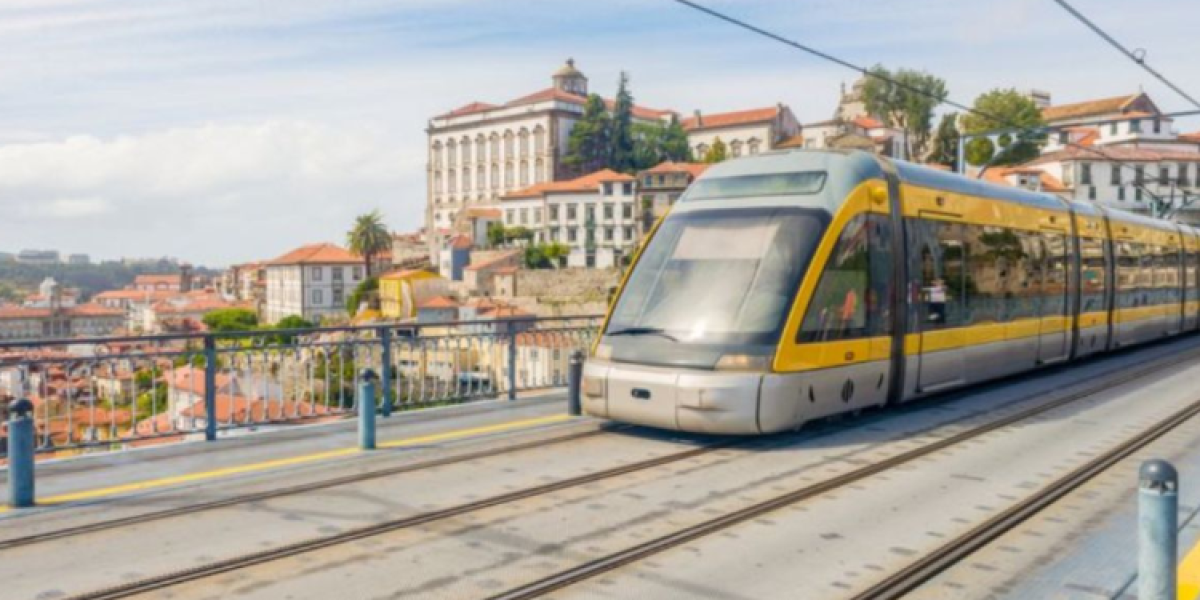
Enjoying a fairly recent and quite efficient metro system that reaches most of the city's outskirt districts, there are very few reasons for you to feel like you will need a car in Porto. That remark is particularly accurate if you will be living or working in the city center, where the area's steep, narrow streets and limited parking spots make it quite difficult to navigate.
Trains in Porto
If you need to leave Porto frequently and visit other regions in the country, take the train at the Campanhã Railway Station. Although the public train system is pretty cheap by most European standards, the carriages and facilities are quite old and outdated, and the service is constantly plagued with interruptions, suppressions and staff strikes. Despite its issues, thousands of people still have to use it every day, making it a pretty reliable option for commuting between different cities, as long as you're not running on a tight schedule.
Alternatively, if you need to travel recurrently along the Douro Valley or from/to the cities of Aveiro, Braga, Guimarães or Vigo (in Spain), then you will use the smaller (yet uber popular among tourists) São Bento Railway Station.
Metro and trams in Porto
The metro is, by quite some distance, the most popular and efficient public transportation in Porto. It's cheap, it's extensive, it's clean – what else do you need? Plus, it is also eco-friendly! Currently composed of 6 different lines (A, B, C, D, E and F), it covers all of the city's main districts and the most populous outskirts, with two new lines and improvements being planned as you are reading this.
Tickets can be purchased on the automatic machines located inside each station (English language available) or via the Anda app. Although these are not available in every station, some scanners also allow you to tap in your contactless bank card, with the fare being deducted from your balance at the end of your journey. The metro runs every day between 06h00 and 01h00, operating 24/7 on Fridays, Saturdays and Sundays during the Summer months. Waiting times vary according to each line, though you never have to wait longer than 3 to 5 minutes in the city center during the day. Once the sun sets, though, frequencies drop and you may wait for 10 (or more) minutes for your vehicle.
In order to ride the metro or buses in Porto, you need to buy an Andante Card (0.60€) from the machines first, which you can then top up with any trips you see fit. After scanning your Andante, each ticket is valid for 60 minutes, and you can take as many trips as you'd like within that timeframe. As for rates, the pricing structure can feel a bit confusing at first, but it's quite easy to navigate once you get a hold of it. You see, the entire network is currently split into 12 different zones, and you buy your ticket according to the number of zones you'll be crossing. If you're traveling in the city center, a Z2 ticket (valid for 2 zones – the minimum) will be enough, in which case you need to load your Andante with a Z2 ticket, currently priced at 1,40€. Be that as it may, every single station boasts a yellow board glued to the ticket machine where you can read the name of every single metro stop and the respective ticket you need to buy (Z2, Z3, Z5, and so on). However, if you're sticking to the downtown area and its neighboring districts, seldom will you need more than a Z3 ticket (1.80€).
Regarding daily passes, mainly aimed at tourists, a 24-hour Andante card, valid for 2 zones, will cost 5.15€ (or 6.65€ for 3 zones). If you're using the metro quite extensively for work, a monthly metro pass for three different zones (Z3) will set you back 30€ - this way, you won't need to keep topping up your paper Andante card with new trips every time you use the metro. Besides, this pass is also valid on all trams and buses in the city. Alternatively, if you need to use the metro every day for school/work and cross more than 3 travel zones, then you might get a monthly pass valid for the entire metropolitan region for 40€.
On the other hand, you may also take the tram, which mainly runs within the city center, the Douro River bank and through the upscale seaside district of Foz do Douro. These picturesque vehicles were once the most popular transportation among locals but became obsolete with the emergence of new bus lines and the inauguration of the Metro do Porto. Nowadays, they mostly stand as a tourist attraction of sorts (especially Line 1). Metro cards are equally valid on the tram, and the same fares and rules apply. However, if you don't top up your Andante beforehand and need to buy a ticket upon boarding, the fare will be 3.50€.
Local buses in Porto
Taking the bus is one of the easiest and cheapest ways of commuting through Porto's different districts, particularly in areas the metro system hasn't reached yet. Once again, you can use your Andante card, but keep in mind you'll need to top it up beforehand, as buses (and stops) have no ticket machines. Otherwise, you'll need to pay 2.50€ to buy your ticket directly from the driver. In order to check bus lines and routes, you may consult the STCP website.
Taxis in Porto
As mentioned above, not having a car in Porto won't be a problem, especially if you will be living near a metro station. However, rest assured, you can always rely on taxis or even Uber to help you out whenever you don't feel like carrying your groceries up the street or need to go somewhere late at night. As in most countries, taxi drivers will start the meter when you enter, and you pay as you exit. The fares are set at a minimum charge of 3.70€ (4.35€ at night) and 0.85€ per km afterward (0.97€ at night). Rates for waiting times are currently €15.80 per hour. Please note that from 21h00 to 06h00, there is a 15-20% surplus on the regular base fare (4.35 minimum; 0.97€ per km).
Ride-sharing services such as Uber are also prevalent in Porto and act as an alternative to taxis. Fares can often work out cheaper, but the drivers are not regulated as per the local taxi system, though laws governing such applications will come into force soon. Because of that, there is currently plenty of friction between “regular” taxi drivers and Uber drivers.
We do our best to provide accurate and up to date information. However, if you have noticed any inaccuracies in this article, please let us know in the comments section below.








